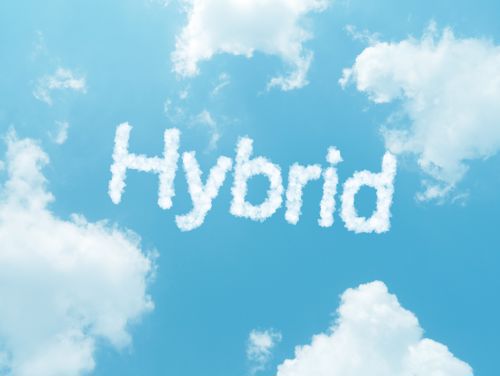
What you need to know about the hybrid cloud
By Max BurkhalterMarch 10, 2021
A hybrid cloud is supposedly the best of both worlds, but the term can mean two very different things. Basically, a hybrid cloud includes the public cloud – space shared with many other organizations on a cloud-based server – integrated with a more private solution. This can either be a private cloud (space closed off and dedicated to you with no sharing), or an on-premise server housed directly in your facility.
What's the difference between public and private?
The main difference between public and private clouds or servers is that a public cloud is cheaper. It costs less to have a shared space in the public cloud. This makes it an attractive option for many small companies seeking to lower CAPEX.
However, the public cloud has some drawbacks, according to CloudCarib. Since it's a shared space, you won't be given as much access to network, meaning you can't fully customize your experience or how your data is stored. You'll also have to accept a higher level of risk in regard to security, as a multi-tenant space by its nature has more vulnerabilities and points of access.
A private cloud eliminates a lot of these concerns by being its own closed off virtual space. You'll have more access and more control, lower security risks, and you'll pay a higher cost for those privileges. A private on-premise server keeps your data physically within reach, makes you fully responsible for security and access, and also costs the most of all solutions when it comes to setup and maintenance.

By adopting a hybrid version, you can create an environment where data, information, and applications are stored in private or public spaces depending on how sensitive they are in regard to security needs. Large blocks of non-sensitive data can be encrypted and sent to live in the public cloud. More sensitive information can be kept in a private cloud — this multi-cloud approach has extra benefits, including not being locked into a single cloud vendor, according to Cloudian.
Finally, mission critical applications can be stored safely on-premise, and backed up for added safety to prevent downtime in case of an intrusion. Spreading out your resources reduces the chance that your entire operation could be compromised in a single hacking attempt, and can reduce overall costs without making you feel like you are putting sensitive data at unnecessary risk.
Main benefits of hybrid solutions
Your benefits to shifting just part of your data load to the public cloud include:
- Lower costs: You'll be able to save big without the ever-increasing need to expand on-prem storage space and build new server rooms. You also won't have as much energy costs due to having to cool massive servers.
- Better security: With a hybrid solution all of your most sensitive data can be kept in more secure locations, reducing the likelihood of a breach. This can allow you to maintain customer privacy and security if you handle any information that could put your base at risk.
- Easy scaling: When you need to expand capacity, whether temporarily or permanently, purchasing more space in the cloud is much easier than adding more racks to your server room. Going hybrid means you can make business decisions fast and act competitively to grab new opportunities on the market, since scaling at speed won't be an issue.
Interested in building a hybrid model? Perle can help with your on-premise needs. Read our customer reviews and decide for yourself!



